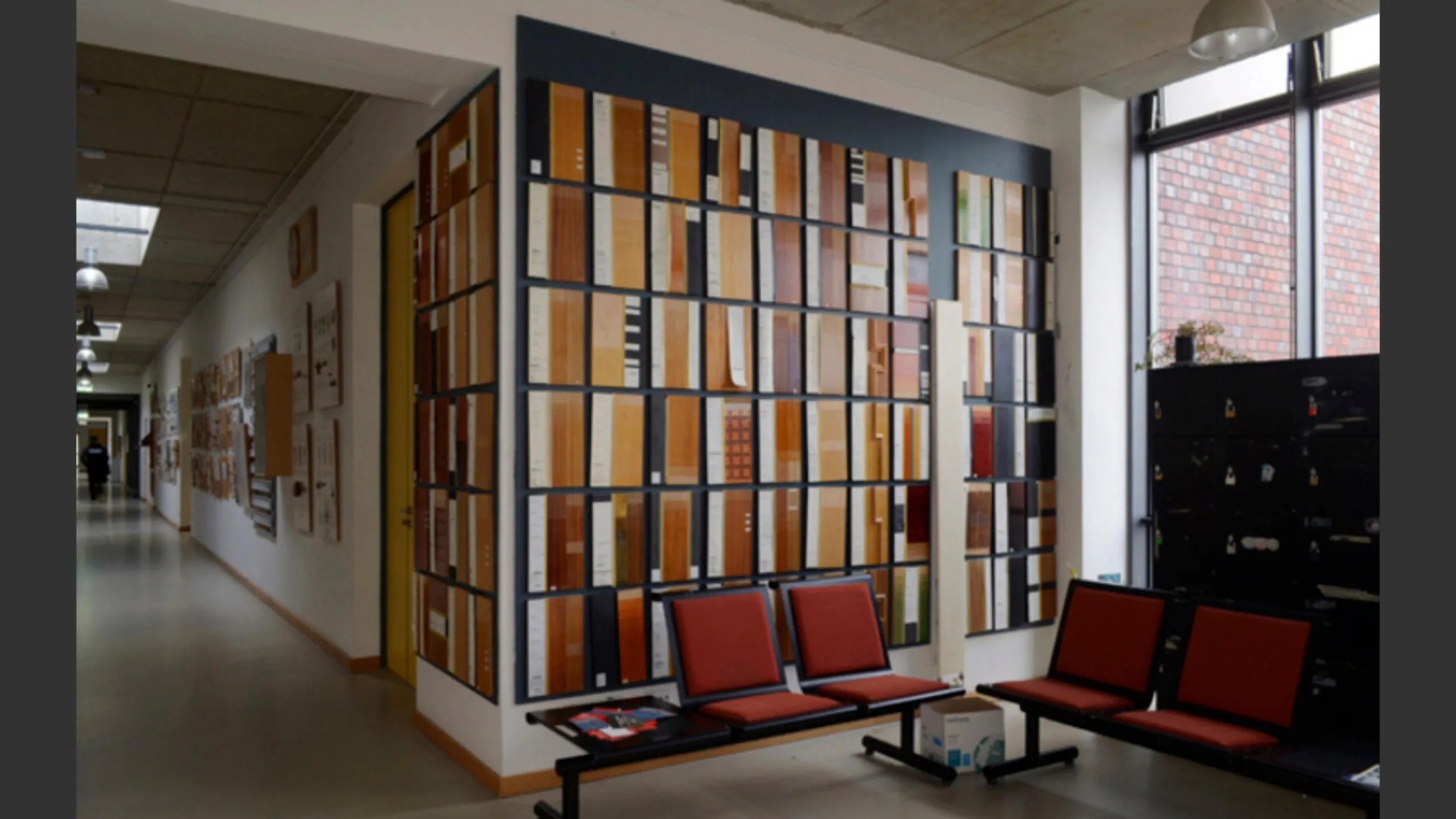Wood | Investigation of the Ageing of Binders in Wood Preservation
As part of the Art Technology and Working Techniques module, students have been working with selected recipes of coating materials from the 19th century, interpreting them and implementing them as accurately as possible.

Description
As part of the Art Technology and Manufacturing Techniques module, students worked with selected recipes for coating materials from the 19th century, interpreted them and implemented them as precisely as possible.
This controlled approach allows the ageing behaviour of the various components of coatings to be understood analytically and observed over time. IR spectroscopic results can thus be compared and analysed with gas chromatic results.
The first part of the project involved the production of veneered sample panels, on each of which a formulation for a typical coating was applied and reconstructed in terms of its technical properties. The application and controlled ageing of the material mixtures will also be researched and analysed over a longer period of time.
Implementation
A number of typical 19th century recipes, usually based on sandarac, are selected. The sources and recipes first need to be interpreted and the quantities converted into today's proportions. The research also includes investigating the origin and use of the coating systems as well as the typical application methods or those recommended by the author of the source. During the semester, the students produce a coating from the specified raw materials according to the relevant instructions. This is then applied to a veneer-coated board, whereby the different application phases should become apparent. For the IR spectroscopic examination, the students prepare additional sample plates containing the brush application of the mixture on an aluminium foil.
The veneered panels, coated using historical techniques, are hung up in the laboratory and workshop building to age naturally in the light. The natural ageing processes can thus be continuously observed and compared with covered and thus protected areas of the panels. These panels will be available to future semesters in order to gain an impression of the historical coating techniques and the appearance of the progressive ageing of natural pumice agents.
Project participants
Project support

Project support

Project support

Students
Students of the 2nd semester from all material directions of the study programme (summer semester 2020)
